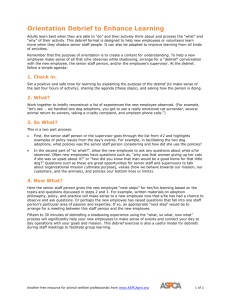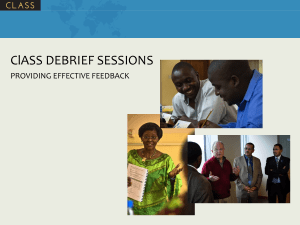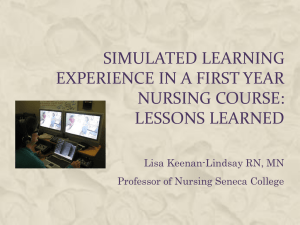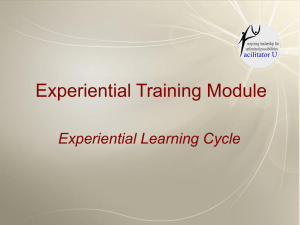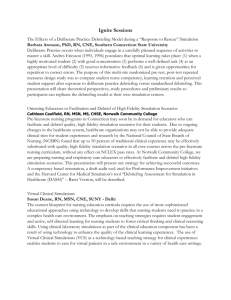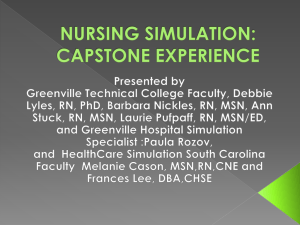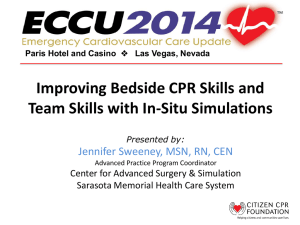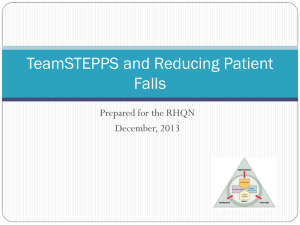Summit 2014, Debriefing - American Association of Critical
advertisement
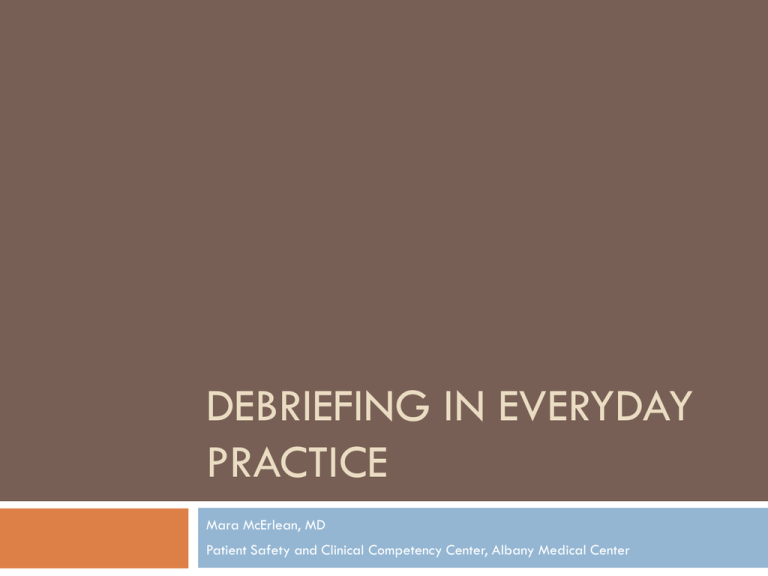
DEBRIEFING IN EVERYDAY PRACTICE Mara McErlean, MD Patient Safety and Clinical Competency Center, Albany Medical Center Acknowledgments Mary Carey Heather Frenz Cathy Manjunath Dan Shovlin Standardized Patients PSCCC Albany Medical Center Serves the educational needs of the Center Standardized patients, task training and simulation Opened in 2011 Debrief Definitions Practical applications Simulation video review Small group discussion Large group discussion Summary Definition de·brief To question someone, typically a soldier or spy Details about a completed mission or undertaking Synonyms: cross-examine, interview, interrogate, question, probe, examine, grill or pump Originally used for soldiers returning from a battlefield, for commanders to fully understand a situation on the front line Done as soon as possible to get the freshest information Communication largely from subordinate to superior Became apparent that there was a benefit to other soldiers to share experiences Greater understanding of what happened when shared as a group Bolstering of individual and group identity Now 1,060,000 results on Google Many additional benefits Clearer understanding for all Identification of future pitfalls Reinforces lessons learned through experience May decrease anxiety of experience Improves group dynamic and functioning Eases transition back into normal work duties American Counseling Association Seven Stages, 3-5 days post event, 2-3 hours Introduction Facts Thoughts Reactions Symptoms Teaching Re-entry Critical Incident Stress Debriefing 1983 Same seven steps Meant to help staff through significant, stressful incidents Also delayed from time of incident Simulation Debrief Discussion after a simulated event Designed to improve understanding To enhance future performance Traditional Simulation Debrief Facilitated by someone with competence Done in a safe environment Facilitated by someone who witnessed the experience Based on a structured framework Congruent with outcomes and objectives International Nursing Association for Clinical Simulation and Learning Four Es Debriefer encourages conversation about patterns of behavior by asking learners to describe the events that happened, the emotions around these events, potential alternative viewpoints to empathize and explanations for actions and emotions. Mayville 2011 GAS Ten minute approach designed to gather information about how learners think and feel about the session, analyze their actions and summarize lessons learned. O’Donnell 2009 Understand the “frame” Assumptions Feelings Goals Knowledge Situation Awareness All drive individual behavior but sometimes are not obvious to others. “Good Judgment” Advocacy Observation, statement Inquiry Question “I noticed when the nurse asked if we needed to intubate, you responded by asking for lab results. What were you thinking?” Rudolph et al. Good Judgment Assume there is a reason for everything, even if it is not apparent to you Be genuinely curious about why someone else did what he/she did Assume everyone wants to do the “right” thing Rudolph All day, every day Every resuscitation Every code Every family conflict Every difficult encounter Maybe even some of the easy ones In fact…. Debriefing is a critical component to continuous quality assessment and improvement Necessary for new staff Equally necessary for seasoned staff Useful in long term retention Necessary for long term job satisfaction Should be employed every day Critical Elements of the Debrief Safe Respectful Goal to understand a system Goal to improve functioning Goal to decrease hardship Start with yourself Assess your own reaction- identify your personal frame What did you witness What problems do you identify Who is the correct person to address What do you want to be the outcome Decide the right time and place Deal with others Acknowledge the emotions first Then work toward a shared understanding of what actually happened Assume the best intentions Keep it personal- your observations and assessment Keep it professional Summarize often Make an action plan What we will do Show you a simulation that demonstrates a clinical encounter It is created, not real Illustrates issues in daily clinical encounters Your small groups will be asked to identify issues Then a representative will talk about what you saw Individual Debriefs Medical care (Covering MD-On-call MD) Equipment (MD-RT supervisor) Family dynamics (Bedside RN-Daughter) Inter-professional communication (Bedside RNCharge RN) Inter-professional communication (Bedside RN-MD) Inter-professional communication (Bedside RN-RT) Crisis recovery (Charge RN-Bedside RN) Prepare your debrief Choose your issue Choose your participants Prepare your opener Be ready to report to the group You have ten minutes Simulation Video Summary Debriefs do not have to be formal or comprehensive Good managers and co-workers use debrief techniques to process everyday occurrences A great method for continuous improvement for patient care, the work environment and job satisfaction THANK YOU! Special thanks to: Pat Cumiskey Mark Dalton Kevin Gardner Lisa Taub Angie Potrikus Erin Waterhouse

